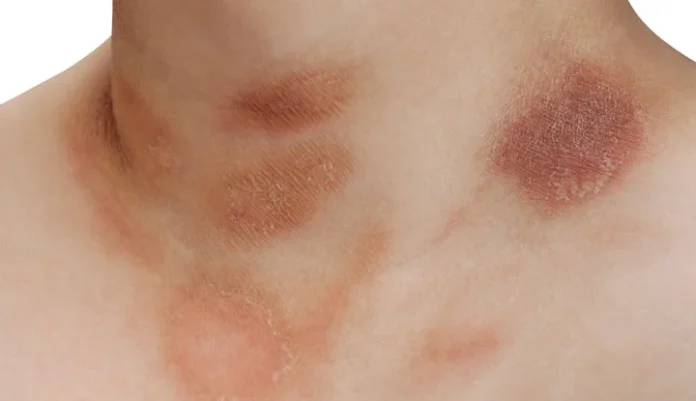Skin rashes can be incredibly uncomfortable and worrying. But knowing what kind of rash you have and how to treat it can go a long way towards relieving your discomfort. In this blog post, we’ll explore diagnosing common skin rashes, their causes and treatment options. Whether you’re dealing with eczema, psoriasis or hives, here’s what to look for and how to treat them.
What are common skin rashes?
There are many different types of skin rashes that can affect people of all ages. Some common skin rashes include:
Eczema: A chronic, itchy inflammation of the skin that can be caused by allergens, irritants, or genetics. It is characterized by dry, red, and cracked skin.
Psoriasis: A chronic, inflammatory skin condition that causes thick, scaly patches on the skin. It is caused by an overactive immune system and genetics.
Rosacea: A chronic condition that causes redness and inflammation on the face. It is often triggered by sunlight, emotions, or certain foods and beverages.
Seborrheic dermatitis: A condition that causes an oily, scaly rash on the scalp, face, chest, or back. It is often aggravated by stress, hormones, or certain medications.
If you are concerned about a rash on your skin, it is important to see a doctor or dermatologist for proper diagnosis and treatment options.
What are the symptoms of common skin rashes?
There are many different types of skin rashes with a wide range of symptoms. Some common symptoms of skin rashes include:
-Red, itchy, irritated skin
-A raised, bumpy texture to the skin
-A spreading rash
-Blisters or pus-filled bumps
-Cracked or scaly skin
How can you treat common skin rashes?
There are many different types of skin rashes, and the best way to treat a rash is to identify the cause. Common causes of skin rashes include:
Allergies: Allergic reactions can cause a variety of skin rashes, including hives, eczema, and contact dermatitis. If you think you may be allergic to something, it’s important to see an allergist for testing.
Infections: Skin infections can also cause rashes. Common infections that cause skin rashes include viral infections like chickenpox or measles, and bacterial infections like impetigo or cellulitis. If you have a fever or your rash is accompanied by other symptoms, it’s important to see a doctor to rule out an infection.
Autoimmune disorders: Autoimmune disorders like psoriasis or lupus can cause skin rashes. If you have a family history of autoimmune disorders or you have other symptoms in addition to your rash, it’s important to see a doctor for diagnosis and treatment.
When should you see a doctor for a skin rash?
If you have a rash that is accompanied by a fever, chest pain, difficulty breathing, or swallowing, you should see a doctor immediately. If the rash is itchy, spreads quickly, or is painful, you should also see a doctor. Rashes that do not improve after a few days of over-the-counter treatment may also warrant a trip to the doctor.
Conclusion
Skin rashes can be an embarrassing and irritating problem, so it is important to know what to look for in order to get the right diagnosis and treatment. While most skin rashes are mild and easily treated at home, it’s always best to consult a doctor if you are unsure of the cause or if your symptoms worsen. By following these tips and knowing what signs indicate a more serious form of dermatitis, you can diagnose common skin rashes quickly and seek out appropriate treatments.























